Underwater Landscape Photos
Deep under water, below the ocean sediment, is a vast landscape, which serves as home to schools of fish and other marine life. Take a look

A wave breaks over a coral reef in the Red Sea. Coral reefs form when colonies of tropical marine plants and animals with limestone skeletons rise atop earlier generations
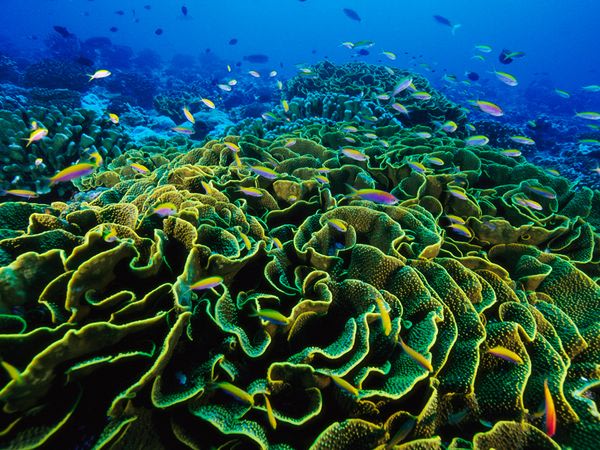
Fairy basslet fish dart among blossoms of lettuce coral near the South Pacific’s Phoenix Islands. This archipelago of eight islands covers roughly 25,000 square miles (65,000 square kilometers)—about one-fifth the area of Australia’s Great Barrier Reef.

Schools of silversides swim with a diver off western Grand Cayman. Proliferating in summer, silversides nourish larger reef species such as jacks, whose numbers have fallen due to overfishing.

Parrotfish swim over a reef cluster off Raine Island, Australia. Female green turtles travel 1,600 miles (2,575 kilometers) from places like Indonesia and New Caledonia to lay their eggs in spots such as Raine Island. The island, where Aborigines once came in outrigger canoes to gather food, is now off-limits to most visitors to protect the nesting wildlife.

A master of innovation and a pioneer of high-tech underwater photography, Emory Kristof has helped National Geographic chart the waters of deep-ocean photography since beginning as an intern at the magazine in 1963. In his April 1998 story, “Testing the Waters of Rongelap,” Kristof examined marine life, including these longfin bannerfish, in the nuclear weapons-contaminated waters surrounding the Marshall Islands.
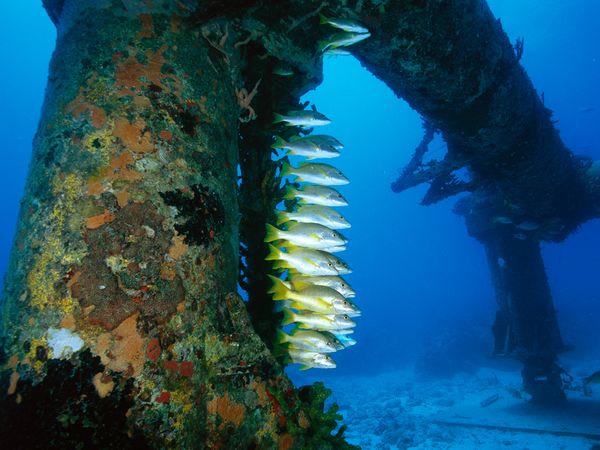
Schoolmaster snappers hover near a support for the Aquarius underwater research station at the Florida Keys National Marine Sanctuary. Installed in 1992, Aquarius sits 65 feet (20 meters) under the sea’s surface and is home to a handful of aquanauts, including scientists, photographers, medics, and technicians.
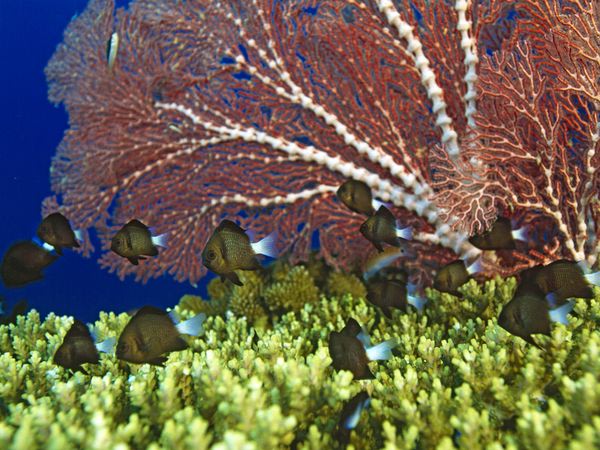
Coelenterate coral and a pink sea fan form a vibrant stage for whitetail chromis near Namena Island, Fiji. In this region, corals can survive in water up to about 86 degrees Fahrenheit (30 degrees Celsius). Beyond that, they face the threat of bleaching and dying.
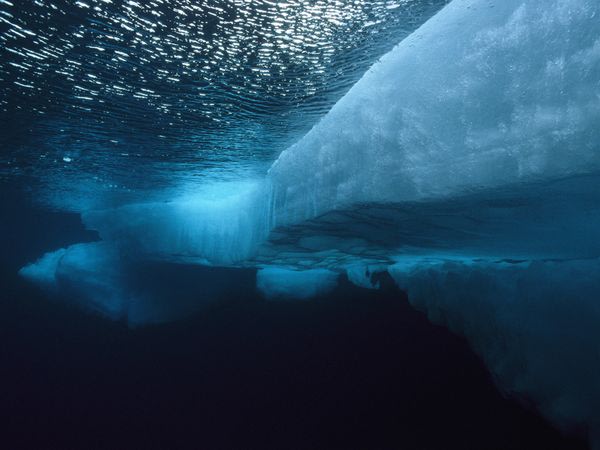
The edge of an ice floe in the Arctic’s 2.3-mile-deep (3.7-kilometer-deep) Canada Basin floats above cold, blue abyssal depths. Channels and air pockets in the ice provide shelter for myriad marine species.

Coral stands tall near the Dominican Republic’s Silver Bank, where the Spanish galleon Concepción sank in 1641. Gold jewelry and silver plates have been among the treasures found near the region’s reefs.
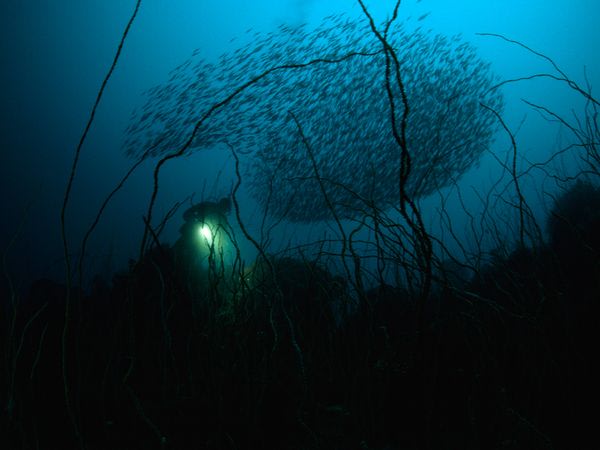
A diver explores wire coral in Japan’s Suruga Bay. At depths greater than 120 feet (37 meters), this coral forest is home to schools of cardinal fish and the occasional cherry-blossom anthias

Photographer Emory Kristof has pushed the boundaries of underwater photography over his long career, from pioneering the invention of remotely operated vehicles, high intensity lighting, and robot cameras, to exploring wrecks like the Titanic and shooting deep sea creatures like these fish and floating salps in the Bowie Seamount. For his contributions to the field, Kristof is known at National Geographic as the king of deepwater photography.

Reefs play an invaluable role in the marine ecosystem, harboring hundreds of species of marine life that rely on them for food, shelter, and protection. A reef also serves as a nesting ground for fish eggs and larvae that eventually populate fish habitats.

